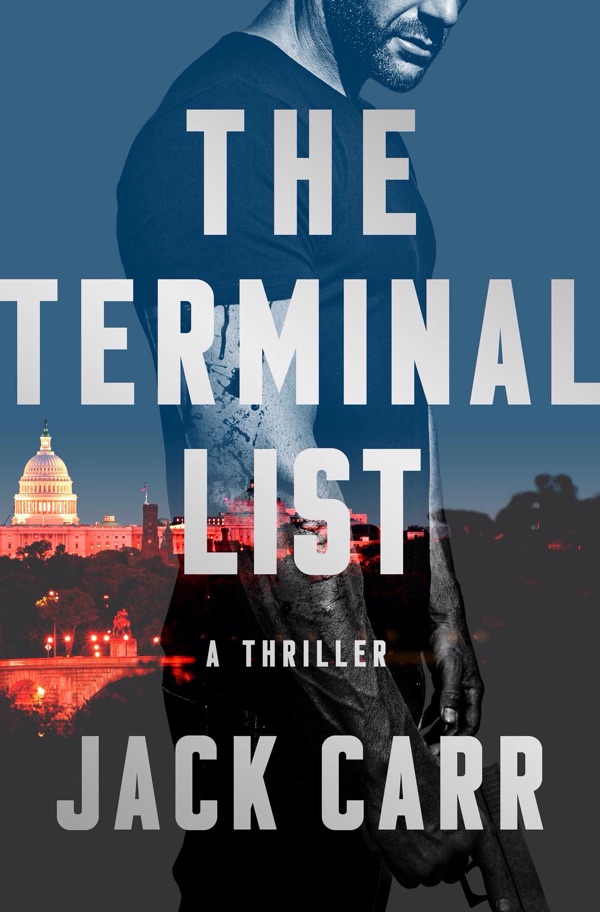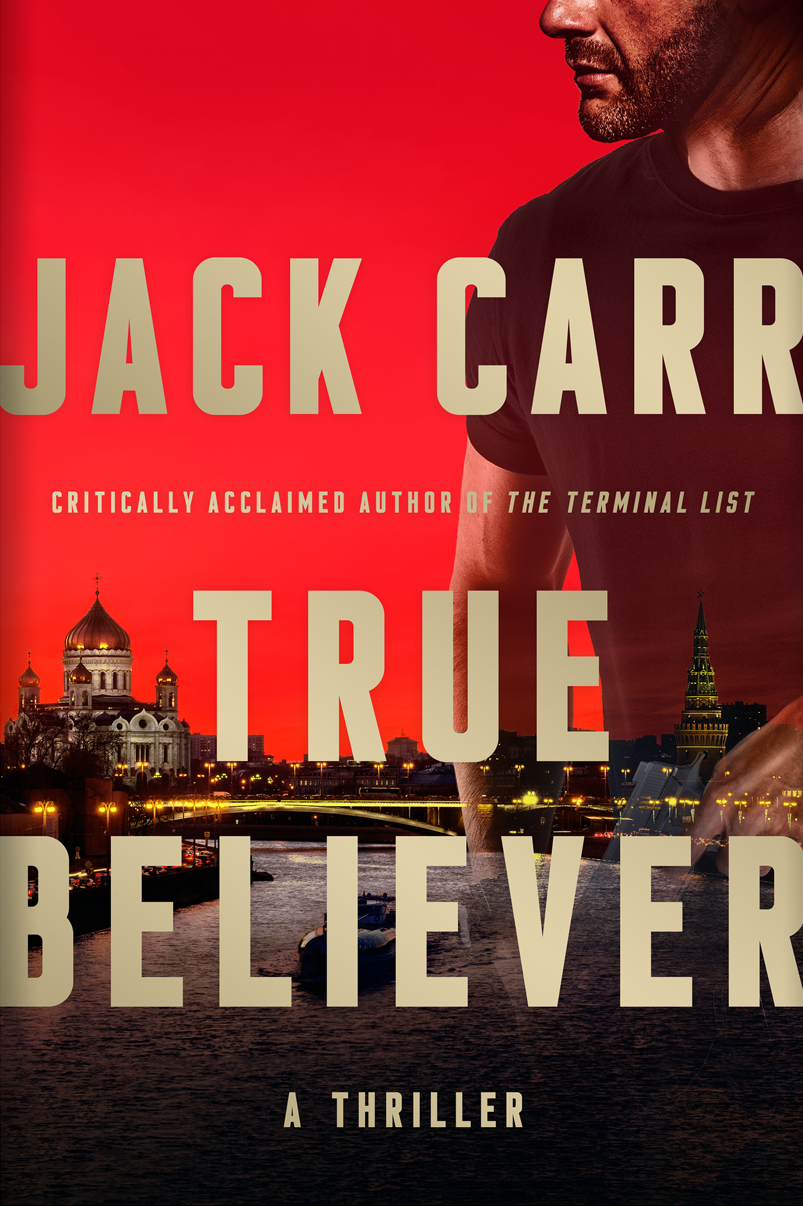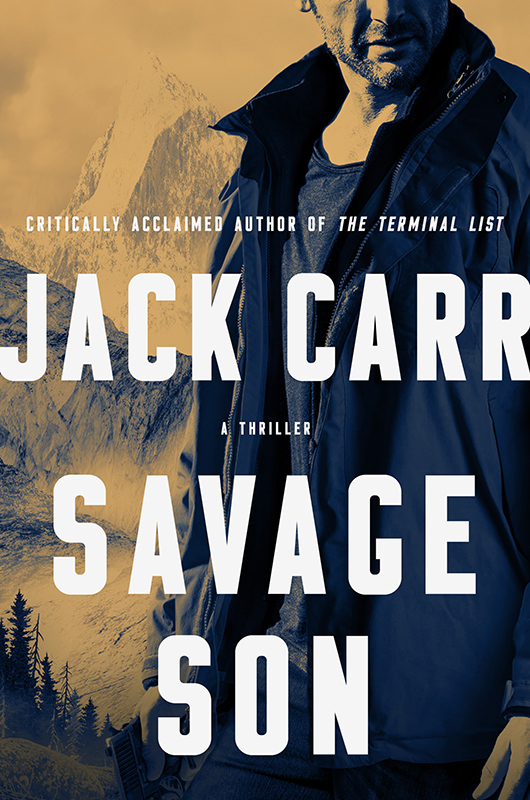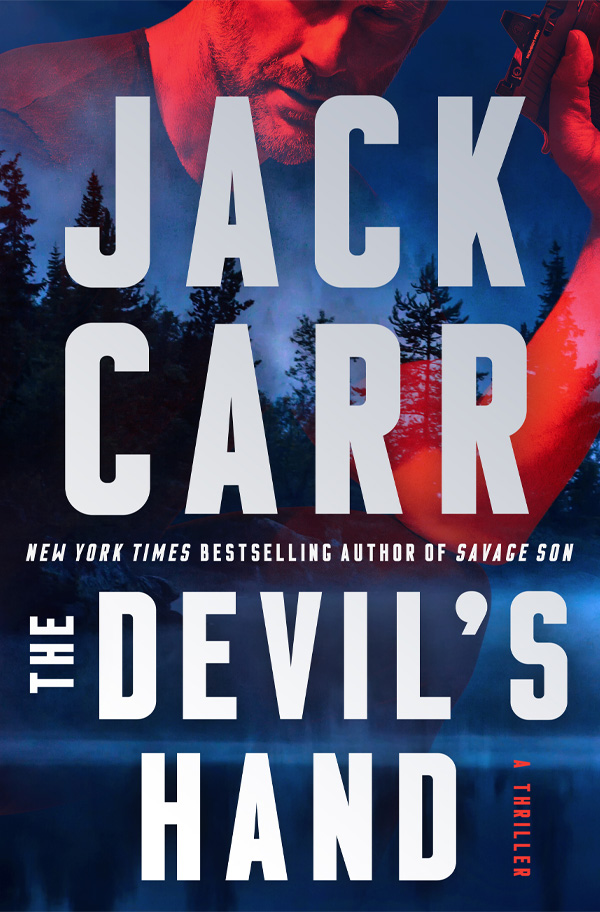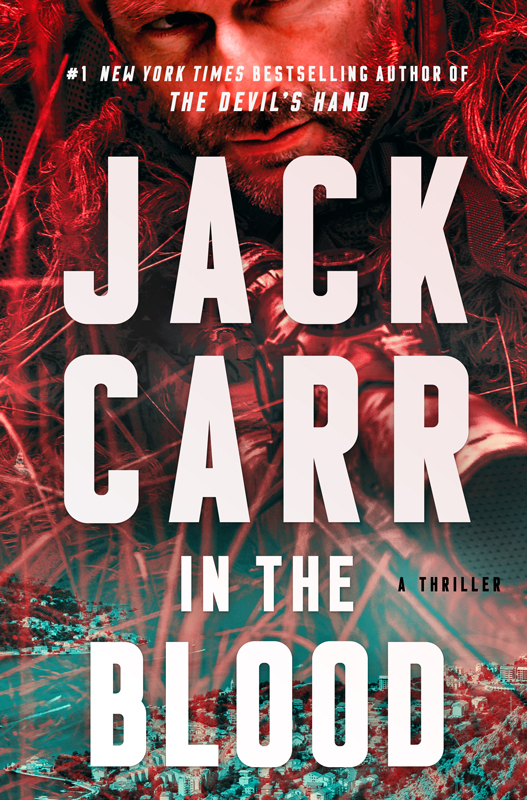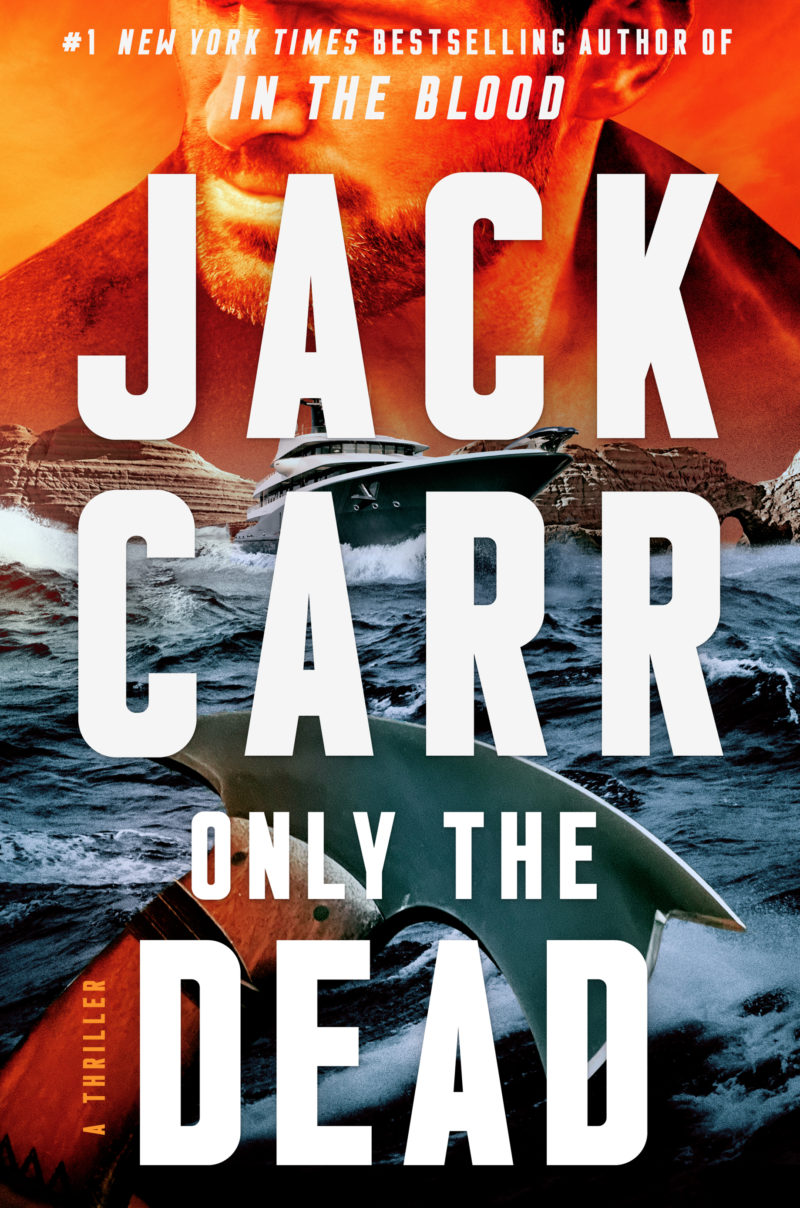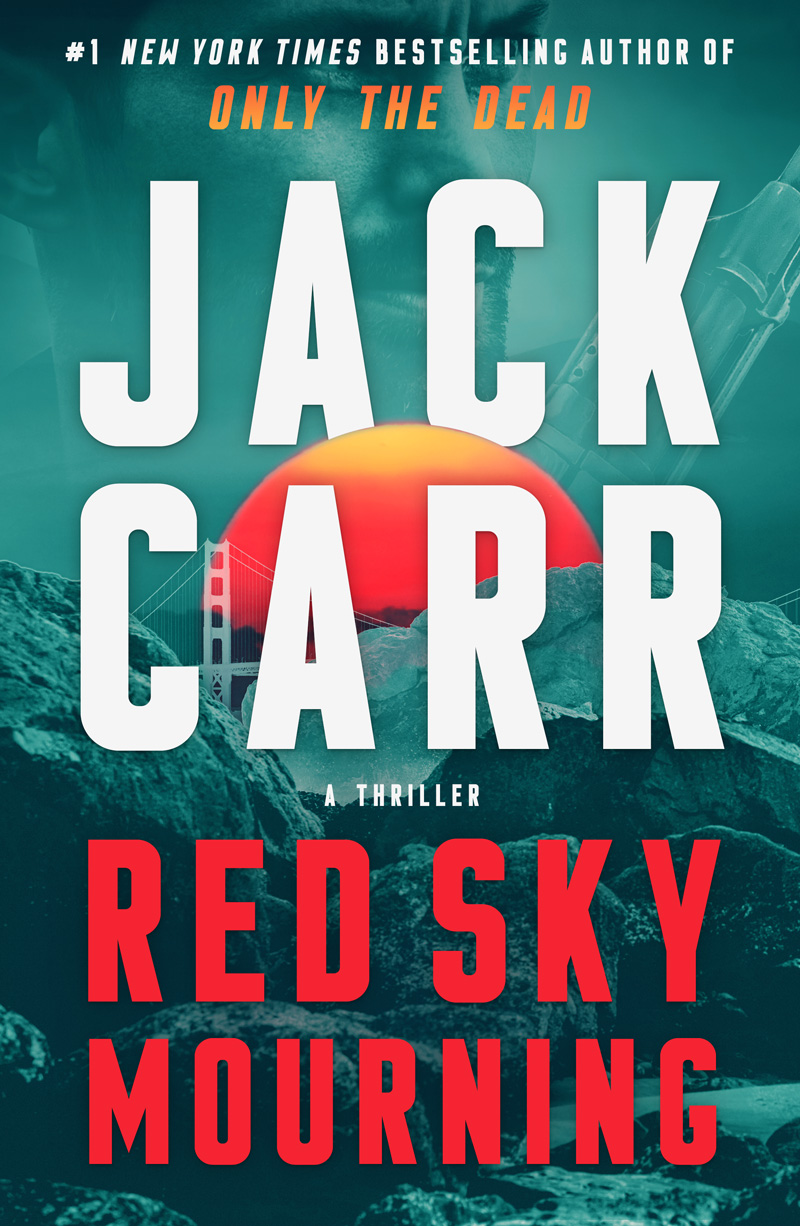Bonding Over Red Sky Mourning:
A Tribute to 007’s Legacy in
Jack Carr’s Latest Thriller
A Tribute to 007’s Legacy in
Jack Carr’s Latest Thriller
Written by Caleb Daniels, Commando Bond
RED SKY MOURNING, in addition to being a powerful political thriller, is at its core, and by the author’s admission, a love letter to Ian Fleming and his prolific character – James Bond. In his (00)7th book, Carr folds in a number of items and moments that pay homage to 007. Some of them are easier to find than others, and this article, while not even close to being an exhaustive list of the references, is a celebration of some of my favorite Bond moments in this book. The writing of Red Sky Mourning included a pilgrimage to the birthplace of James Bond by Carr – Ian Fleming’s own home in Jamaica, Goldeneye. These references are not flippant in nature but authentically written by a lifelong fan of 007 and effectively folded into an incredible James Reece adventure.
001 – THE GAMBLING
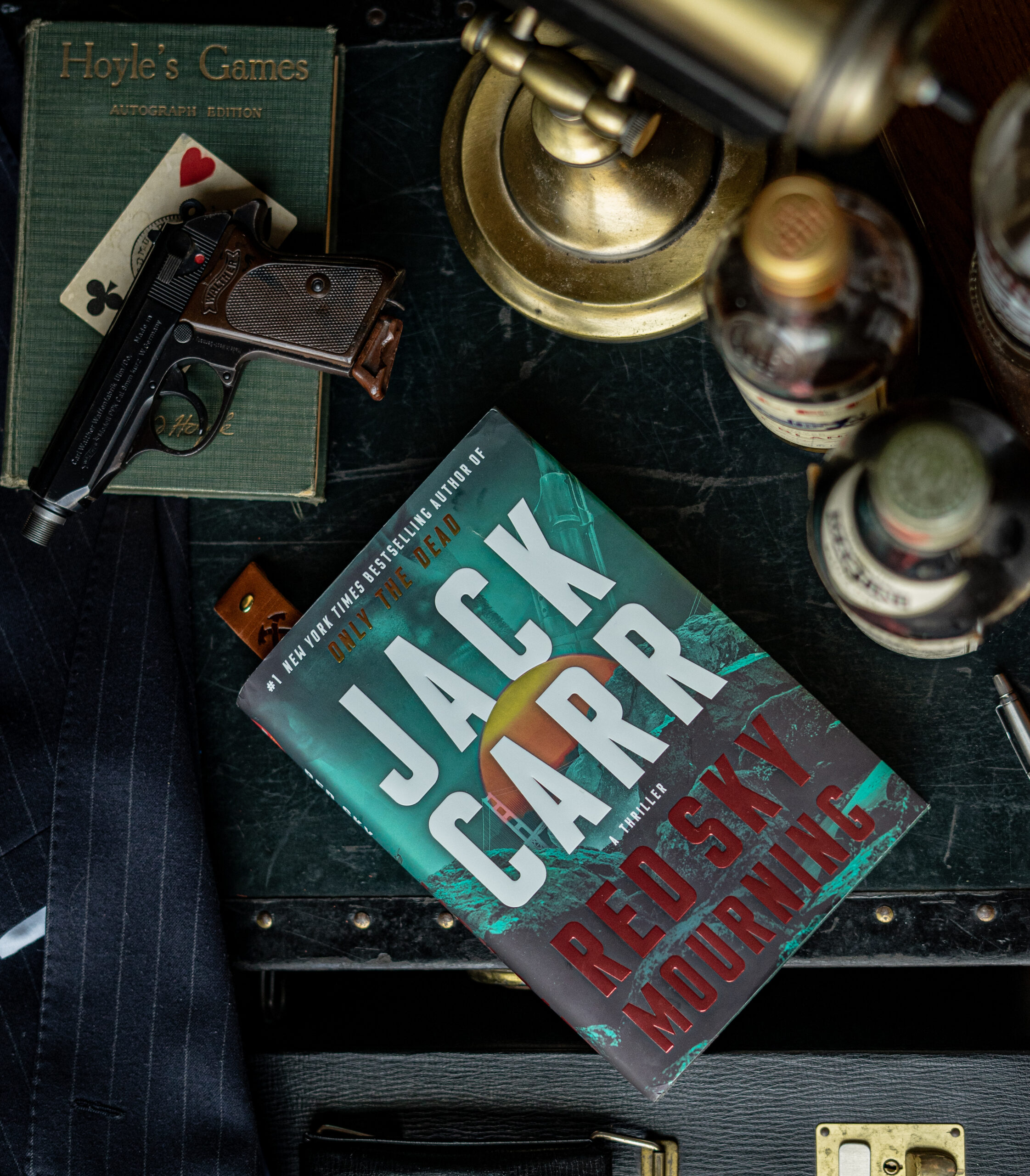
A shining Bond moment in Red Sky Mourning is the baccarat sequence, which leads into the bloody and epic pitched battle with the suppressed Walther PPK chambered for 7.65mm, and bottles of Bond liquor utilized as improvised weaponry, first in blunt force fashion and, as the fight continues on, as deadly edged implements.
Taking a step back from the violence, this is a perfect moment that provides contrast between Bond and Reece. While Bond would take pleasure in besting his opponent at cards, Reece is much happier telling them to take a flying leap and returns to his hotel room instead. Casino Royale is entirely built around a high-stakes baccarat game meant to bankrupt Le Chiffre.
The 2006 film would modernize the game to one more familiar to audiences, Texas Hold’em, but it’s a lovely nod to Bond’s first outing to include this game. Reece shouldn’t feel put out that he had to review a book on the rules of the game either; in the novel Moonraker, Bond uses a book to remind himself of the best ways to cheat at cards in order to beat Hugo Drax (who was also cheating) at his own game.
002 – THE GUNS
“PPK? Who uses PPKs anymore?”
Other than feeling personally attacked by the bemused thoughts of James Reece, I was so excited to reach this previously mentioned sequence of the novel.
An unrivaled moment in Red Sky Mourning places the definitive sidearm of James Bond in the hands of James Reece, while the man is wearing a dinner jacket no less and operating it in the bloody, intense fashion one expects from Carr. It’s everything a fan of Bond would want, and all done in the style in which Carr excels, with brutal, unabashed, and incredibly detailed action sequences. Like the Bond of the novels, and unlike some of the more campier Bond films, Reece takes some abuse and dishes it out quite effectively too, and with a Walther PPK, 7.65mm. This one is very special to me for so many reasons. The PPK is the undisputed sidearm of 007, in the hands of the literary character who is the clear successor to Bond. After all of the violence, Reece’s tuxedo shirt is destroyed, and he quickly pulls out a dark blue Sunspel Riviera polo and RGT Ridgeline Supply jacket – both of which were worn by Daniel Craig’s 007.
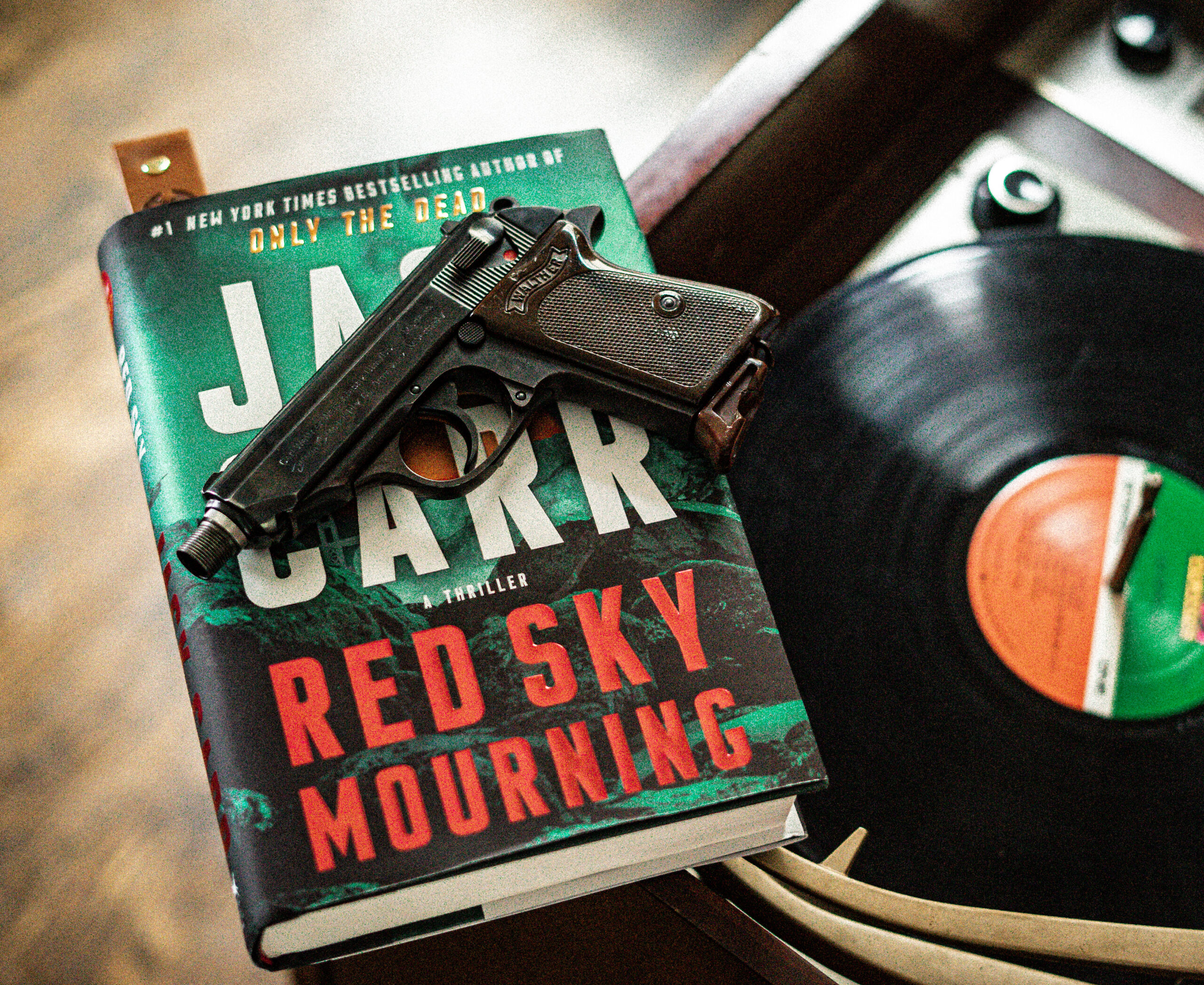
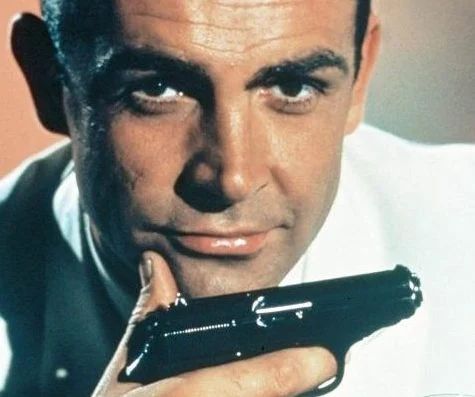
During Reece’s fight, his PPK jams, forcing a classic tap, rack, bang to clear the malfunction and eliminate the threats. It’s a nice moment, especially as James Bond himself was forced to retire his PPK in the 1980s due to a near-catastrophic jamming of a Walther PPK in the real world.
On March 20, 1974, Princess Anne of the British Royal family was the victim of an attempted kidnapping. The lone wolf operation of Ian Ball was the first of its kind against the Royal Family and forced a hard assessment of the security standards. Most notably, the Princess’ only personal protection officer, James Beaton, was armed with a Walther PPK. He missed the would-be kidnapper with his first shot, after which his PPK jammed. Beaton was then shot twice by Ball. The Princess would be saved by heroes racing from the crowd. Her bodyguard was alive but out of commission. As Beaton later said, “the Walthers were got rid of overnight.” In 1981, John Gardner would write the first James Bond novel since 1968 and wove this history into his books. Bond could no longer wield his PPK.
Additional honorable mentions from the world of Bond (or adjacent to) are the Walther PDP, the modern Walther, the next generation of pistols spawned by Bond’s own P99, and the Ingram M-10, which has been seen a few times through the films.
Finally, the last pistol used by Reece is a Beretta 92FS. In the climax of No Time to Die, Bond, while also raiding an island lair and racing a clock to prevent mass destruction, obtains a Beretta M9A3 from the villain and uses it to coldly kill him. Reece dispatches the author of his torment in this novel similarly but with a 92FS. As Bond’s first gun is a Beretta, this was a nice nod in the 25th film and read wonderfully here as well.
003 – THE DRINKS
Aside from using two liquor bottles bearing labels favored by Bond (2002 Dom Perignon Brut and Macallan 18-Year Single Malt Scotch Whisky) as improvised weapons, James Reece finds himself surrounded by and consumes a few familiar Bond labels and cocktails.
He first jokingly orders himself an Old Dusseldorf in a long neck (Magnum PI), then requests a dry martini, and finally settles on a “Negroni with Gordon’s.”
Three casual references effectively laundry listed together. Bond is, of course, forever tied to his vodka martini, shaken, not stirred, but James Bond has quite the breadth (and depth) of alcoholic preferences. In the short story Risico, Bond orders the very same Negroni, and specifies Gordon’s gin. Gordon’s is a familiar label for Bond fans, as it is a central ingredient in the Vesper martini, a cocktail invented by James Bond in 1953’s Casino Royale.
When escaping the hotel, Reece also encounters a bottle of 2007 Taittinger Comtes Blanc de Blancs champagne inside his complementary Rolls Royce and decides not to pour himself a glass. Instead, he conceals his PPK and its silencer within the Phantom’s coolbox.

004 – THE FLEMING NODS
Fleming’s Bond is defined by his unique choices in every little detail of life. From how he makes his coffee, to how he dresses, and shaves and showers, the world of James Bond is rife with these little moments that define Fleming’s writing style and provides a window into history. I’ve said countless times now that I appreciate Carr as a modern Ian Fleming because of his excellence in authentically folding in items, brands, and pieces that have impacted his life, which are then put to the page, informing the world of James Reece. In Red Sky Mourning, many of these lifestyle moments are lovingly inspired by James Bond.
In the novel From Russia, with Love, it is mentioned that 007 prefers to make his coffee at home in the following manner, “It consisted of very strong coffee, from De Bry in New Oxford Street, brewed in an American Chemex, of which he drank two large cups, black and without sugar.” Katie uses the same American Chemex to make coffee for Reece and Vic, doctored to Reece’s preferences. Vic quickly requests it black, just as Bond takes it.
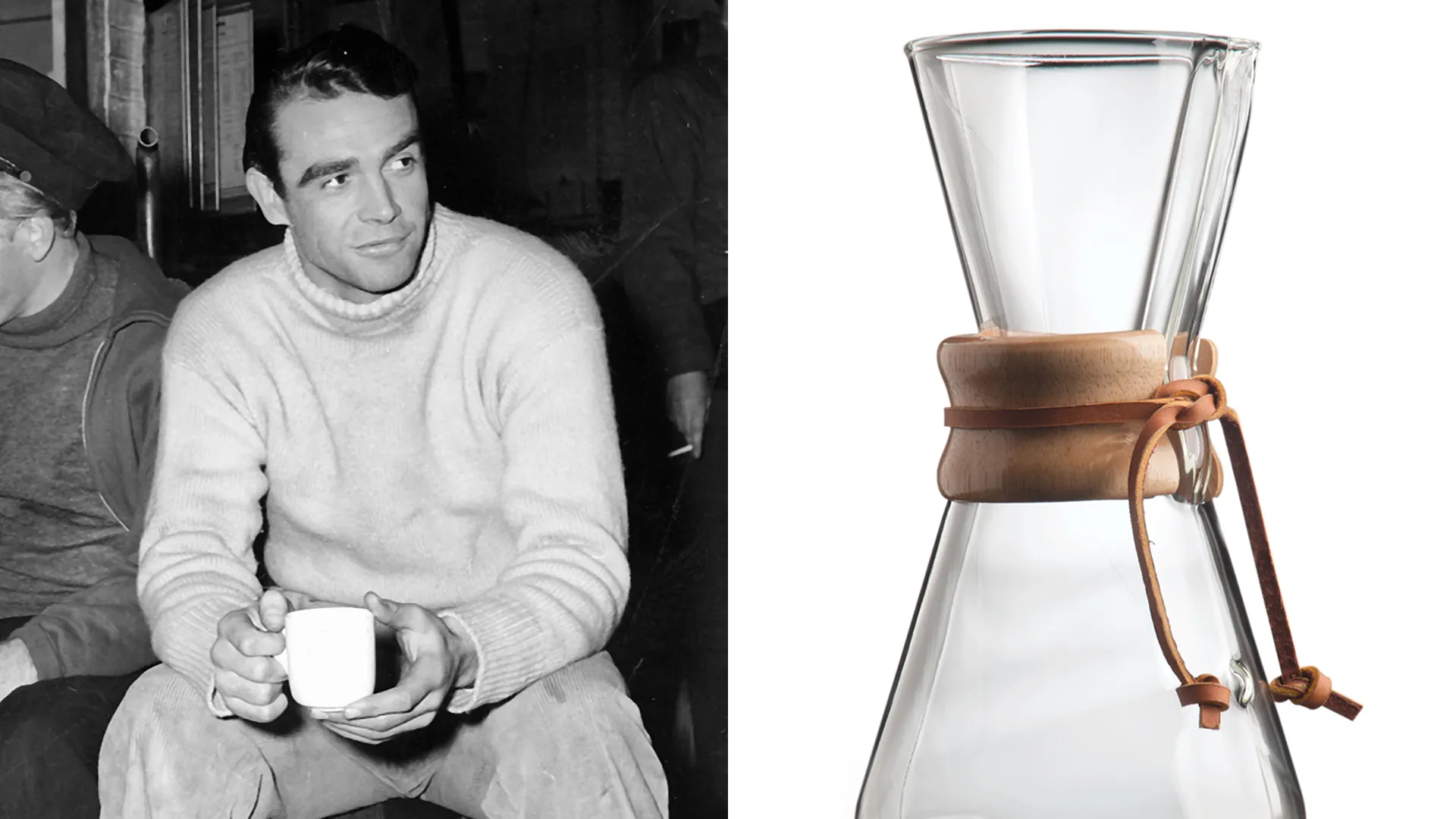


Additionally, Fleming’s Bond has a peculiar ritual when showering: a few minutes under scalding hot water, followed immediately by minutes in ice-cold water. James Reece follows such a ritual while preparing for his game of Baccarat and concludes by donning a tuxedo, adjusting his bow tie and checking himself in the mirror once more, and exiting his room. Bond set the stage for this last moment as well, in the novel Casino Royale. In Chapter 8 “Pink Lights and Champagne” we find Bond undertaking the same ritual, in the same paragraph that introduces 007’s “flat .25 Beretta automatic with a skeleton grip.”
And of course, one cannot forget Bond’s first car, his “locomotive” as Fleming dubbed it, the 1930 4 ½ – litre Bentley supercharged by Amherst Villiers. The car is as much a character in the books as the DB5 is on the screen, and the small moment it is granted in Red Sky Mourning is in Lawrence Miles’s collection.
Aside from these lifestyle moments inspired by Fleming’s Bond, Carr folds in a few nods to the author himself. The most obvious call out is discussed in Carr’s Author’s Note, the Golden Typewriter. Those familiar with Fleming’s life may have also caught the nod to Kitzbühel, a town in Austria that Fleming recalled as his “golden years.”
For me, the true joy was a callout to the Signet Edition paperbacks. Those were my introduction to Fleming’s novels, a gift from a relative, and when I first started connecting with Jack, we spoke briefly about the Signets. He mentioned that he had none, and as a gesture of gratitude to him, I sent along a set of Signet paperbacks that I had picked up, 007 of them, to be precise. I’ve traveled the world now with a Signet Bond novel in my back pocket, and I was absolutely beaming when these particular editions, the pulp-style American paperbacks from the 1960s, were introduced.
005 – THE GIRLS
I always find it fascinating where authors pull inspiration from to create new characters, and nothing defines a literary character more on the page than their name. Often, it’s one of the first things shared with the reader, and can immediately imprint a visual in one’s head. No matter how much an author might try to describe a character after the fact, this first impression, informed by one’s own life and experiences with people of a similar name, or whatever may be associated with those syllables, will provide the reader with the smoky, blurred image in their mind’s eye each time they see the character.
In Red Sky Mourning, a few of the ancillary characters, when introduced, seared the image of Bond girls into my mind. In two cases, Carr blends the name of a Bond girl (character) with another name of a Bond girl (actress). “Helga” and “Sylvia” invoke two familiar faces for Bond fans – Helga Brandt of You Only Live Twice, and Sylvia Trench, the very first Bond girl, introduced in Dr. No, who asked Bond his name, allowing for the most iconic line in cinematic history to be uttered for the first time, in a moment that defined the entire franchise.
Trench would reappear in From Russia with Love, providing continuity in the early Bond years, and she would be the first Bond girl to appear in more than one movie as the same character, a feat that would not be repeated until the Craig era. And, perhaps the most somber Bond girl nod found is the near death of Reece’s fiancee. In both the novel and film, On Her Majesty’s Secret Service, the story ends with the murder of James Bond’s wife as they leave their wedding.
Tracy Bond is shot through the windshield, and so the story ends. In the early pages of Red Sky Mourning, Katie is also shot through glass in a surprise attack from an assailant and gratefully survives. The gut-wrenching feeling of concern for a character is so strongly felt when reading this book, in the same way one feels reading a similar moment by Fleming.
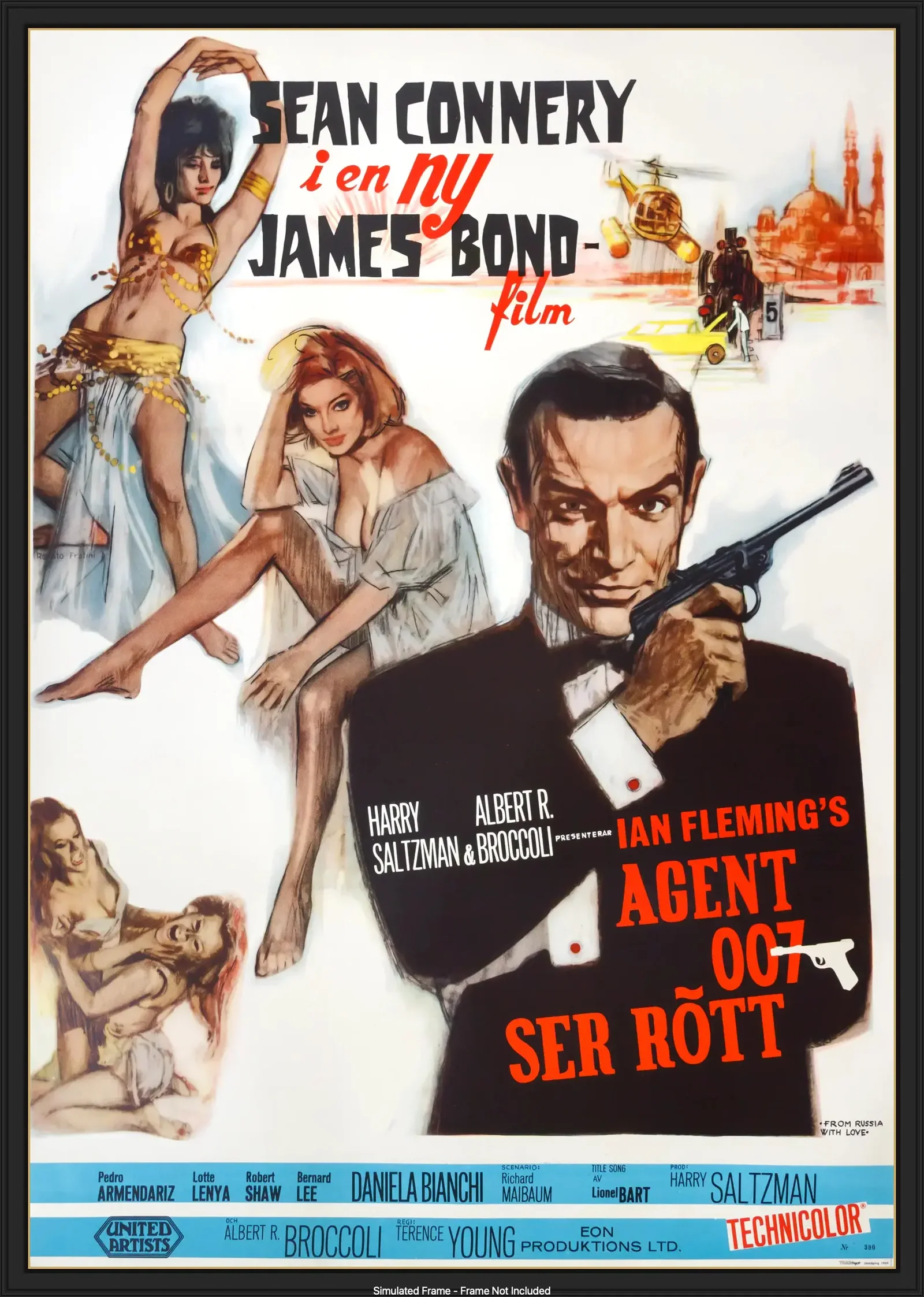
006 – THE MAN WITH
THE GOLDEN GUN
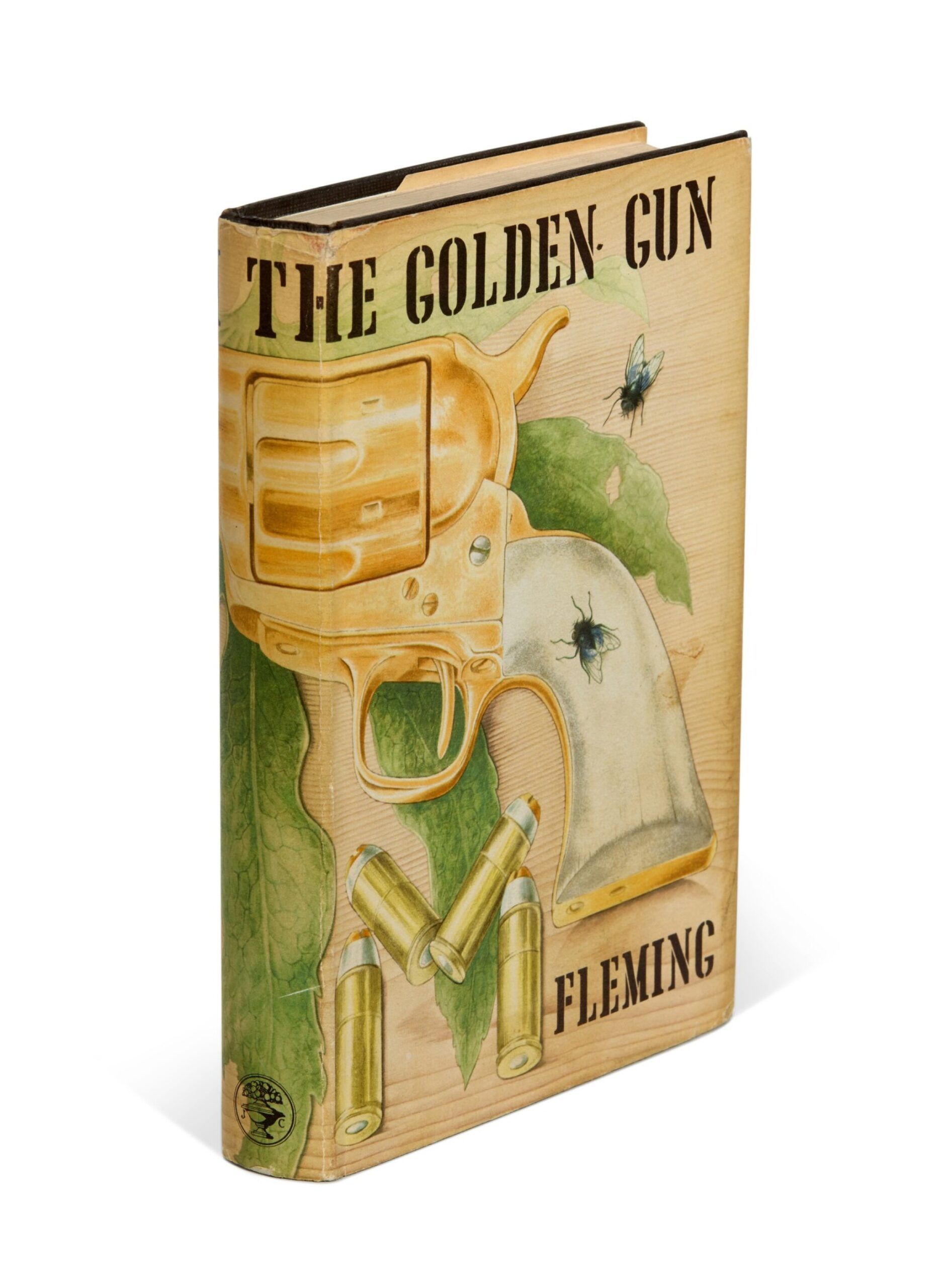
1974 Film – Green Rolls-Royce
“A two-tone metallic green and black Rolls-Royce Phantom Extended Series II was waiting to shuttle him to his accommodations at the Banyan Tree hotel on the Cotai Strip. The driver, who spoke broken English, informed him that all guests booked in the Presidential Suite are offered the complimentary service for the ten-minute drive.”
One of my favorite references we discovered was a happy accident – the inclusion of a green Rolls-Royce picking up James Reece when landing in Macau.
I immediately assumed this was a nod to 1974’s The Man with the Golden Gun. Bond is tracking Francisco Scaramanga’s (trapped) girlfriend, Andrea Anders, from Macau to Hong Kong. Bond watches as Anders, exiting the airport, gets in a green Rolls-Royce Silver Shadow and hails a cab to follow her, only to be suddenly blocked off by a green MGB. Bond, in a moment of mild fury, goes to rebuke the driver, only to find out it is a familiar face, Mary Goodnight. Bond chastises her for losing their mark and is confused when his stern tone is met instead with a bubbly laugh.
Why? Because all green Rolls-Royce’s in Hong Kong, she tells Bond, are operated by the Peninsula Hong Kong hotel. The hotel has a rich history with Rolls-Royce spanning back to 1970. Today, the Peninsula Line of Hotels owns the largest fleet of Rolls-Royce cars in their industry.
Fleming’s Novel – “Attacking birds with Golden Bullets”
When discussing the United States’ approach to conflict in Chapter 5, Ba Jin, the Chinese Presidential Envoy to the intelligence service, says, “The American’s extravagance in war is akin to ‘attacking birds with golden bullets.’”
In the novel The Man with the Golden Gun, during Bond’s first encounter with the titular villain, Francisco “Pistols,” Scaramanga, when he first encounters Bond, attempts to intimidate him by cruelling, killing two birds resting in a window. The Scaramanga of the novels carried a “gold-plated, long-barrelled, single-action Colt .45. “He uses special bullets with a heavy, soft (24 ct.) gold core jacketed with silver and cross-cut at the tip, on the dum-dum principle, for maximum wounding effect.” There you have it, lavish, unnecessary extravagance, the murder of birds with 24 ct. gold bullets.
“The explosions from the Colt .45 were deafening. The two birds disintegrated against the violet backdrop of the dusk, the scraps of feathers and pink flesh blasting out of the yellow light of the café into the limbo of the deserted street like shrapnel.”

007 – THE finale
If you didn’t heed the spoiler warning at the top of this article, this might be a good place to turn back. The finale of Red Sky Mourning ties up all the storylines and effectively sets James Reece up for a life he richly deserves and one that is familiar for fans of 007.
James Reece is dead. Or at least, that’s the assumption of the world, thanks to the help of Alice. He has sailed into the sunset and found solace in a small village in Malta as a quiet and kind stranger. Reece even finds himself driving a Land Rover Series III instead of his favored Toyota. He is finally at peace when Katie arrives with Fleming’s typewriter, a loving gift from the Hasting patriarch, in hand.
It’s the kind of ending Bond fans can only be envious of. No Time to Die’s climax kills James Bond in a hailstorm of missiles. Still, its beginning puts Bond in his spiritual home of Jamaica, the birthplace of the character, behind the wheel of a Land Rover Series III, a ghost in the local community who is living on the edge of society, fishing with a speargun and piloting the same model of Spirit sailboat used in the conclusion of Red Sky Mourning.
For those waiting for the promise made at the end of No Time to Die’s credits, “JAMES BOND WILL RETURN,” James Reece, the modern American answer to 007, is a character deserving of attention and celebration. While Carr is a fan of Bond, and clearly has put so much thought into weaving 007’s world into this novel, Reece stands on his own. He’s the amalgamation of Thomas Magnum’s affable spirit and the dark world of espionage and a modern answer to the question of who is a hero in these tumultuous times.
Parting Shots
I’ve frequently declared that Jack Carr is a must-read for James Bond fans. Today, with the latest Carr novel published and in our hands, I would encourage fans of James Reece to pick up a Fleming novel. Find yourself immersed in the incredible world of 007 during the early years of the Cold War. Read a book that acts as a time capsule, which catapults you into the world and politics of the 1950s -1960s. Just as Carr’s books will be read in years as primary source fiction, Fleming’s books are ones that inspire me, help me understand the past, and have deeply impacted our favorite modern thriller writer as well.


About The Author
Caleb Daniels is a lifelong Bond fan and firearms enthusiast from Kansas City, Missouri. Commando Bond was founded to bridge the gap between pop culture and the world of firearms by analyzing how to live like Bond, from his daily carry to his wardrobe and lifestyle.
Follow Caleb on Instagram @commandobond and
online at commandobond.com
FICTION WITH WHISPERS OF TRUTH
Applying the experience and emotions from real-world combat to the pages of his novels, Jack Carr brings unprecedented levels of authenticity to the political thriller, taking readers on a behind the scenes journey into the mind of a modern-day special operations soldier.

